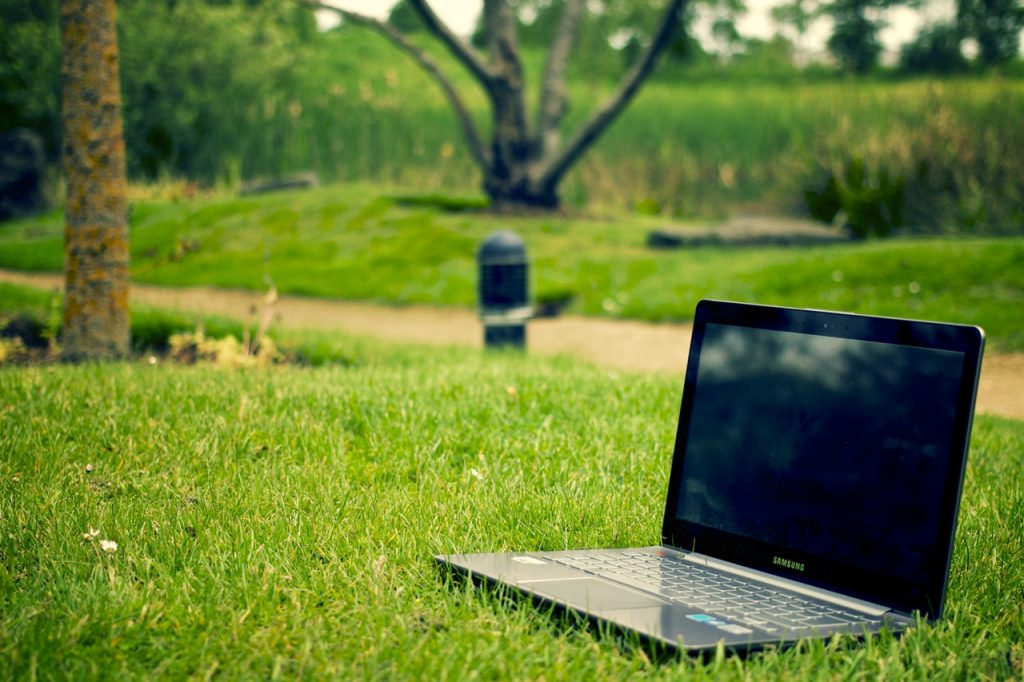In the constantly digitalising world working either fully or part-time from home has become more popular than ever. According to a research from 2017 approximately eight million Americans benefit from the favourable conditions of teleworking – and this number has most likely increased since then.
Remote workers can enjoy multiple benefits, such as bid farewell to long and arduous commutes and their accompanying tariffs, office gossip, painfully early hours and the costs and effort of maintaining an adequate work wardrobe.
Nevertheless, working from home does not come without its implications. Remote workers are required to put in a substantial amount of working hours, most of which are spent in front of their computer screens. This may carry potentially detrimental effects on their physical health. Mentally, digital workers can be at risk, too – 19% of remote workers in a study by Buffer reported loneliness as the most unappealing side-effect of their job descriptions.
Safeguarding both your physical and mental health is paramount if you are serious about pursuing a career in remote working. Enjoying the comfort and flexibility it offers is simple; neglecting your well-being is also frighteningly easy when you’re caught up in what you are doing. This article outlines 10 dos and don’ts of working from home to help you stay healthy – and productive!
DO… mind your hygiene
Now that dress codes are a thing of the past, the welcoming folds of your bathrobe beckon enticingly. You work for the first few hours in bed, don’t shuffle down for breakfast until mid-morning and, by mid-afternoon, realise there’s really no point in changing out of your nightclothes. You promise yourself an evening shower but, just as you’re about to hop in, an important email pings into your inbox and, by the time you’ve finished answering it, you’re knackered.
Frightening scenario, isn’t it? Psychologist Dr Karen Pine warns that casual dress can potentially have severely negative effects on a worker’s productivity rate, regardless whether they are working from home or not, adding that dressing smartly allows employees to be “more cognitively alert than if we dressed down.” It also allows our minds to create a clear distinction between work and home life. So taking care of your hygiene and getting “ready for work” is an important part in our list of dos and don’ts of working from home.
DON’T… stay indoors all day
Balancing work and home life can be challenging when you’re a remote worker. Though teleworkers do put in plenty of hours at their computer each day, in reality there are plenty of distractions that can make their workload seem never-ending. The temptation to finish your day’s workload however long you keep at it may be tempting, but the importance of getting some fresh air is undeniable. Besides the obvious benefits of loading yourself up with some good old Vitamin D, getting some extra oxygen is proven to enhance concentration, fill you with energy and make you feel brighter.
The great thing about working from home is that you don’t really have to be at home. Take your laptop outside if it’s sunny, find a shady spot at the park or even – if you’re lucky enough to get a good wi-fi connection – work by the sea.
DO… set up an office space
Though workplace gossip and chatty colleagues may be satisfyingly absent when you’re a remote worker, there are still plenty of things that may distract you from the task at hand, especially when you’re doing most of your work from home (kids, anyone?). A good way to deal with this – as well as help you maintain a healthy work-life balance – is to set up an office space. Having this at home gives you the creative rein to design an environment that enhances your productivity in the best way possible. It can also act as a useful indicator to other family members that you are not to be disturbed. Psychologically, ‘leaving’ your office may also help your mind switch off work mode once you’re finished and help you relax until you’re ready to pick up where you left off the following day.
DON’T… snack
Working at home probably means there’s a kitchen full of potentially unhealthy snacks just metres away. Not only is it difficult to tear yourself away long enough to make something passably healthy when inspiration strikes; but research indicates that working away from an office environment means you’ll miss out on important structural and societal cues that enable you to regulate your eating habits. Whether you’re a perennial crisp grazer or one of those weird individuals who doesn’t feel their hunger pangs, overcoming this obstacle is fairly easy if you’re willing to plan ahead. Stock up your fridge and pantry with healthy alternatives such as fruit and nuts – you can even prepare snack-sized smoothies and other small meals days in advance.
DO… seek company
So distractions at home are significantly minimised – great. But lack of human interaction can be a huge challenge for remote workers, especially the more gregarious among us. Steer gives the following useful guidelines for keeping the risk of loneliness at bay when you’re working from home:
- Integrate social breaks into your routine
- Work from a local coffee shop or co-working office so you can feel part of society
- Go to networking conferences or arrange a meetup
DON’T… procrastinate
Procrastination is the greatest enemy of remote workers. Lack of supervision and a properly structured work day create several hindrances which are absent in office environments, and you may find five o’clock has rolled around with only a minimally diminished workload. Recognising why you are reluctant to get anything done is an important step with dealing with problem; a straightforward solution could be establishing a routine and doing your best to stick with it.
DO… set a schedule
Human beings are creatures of habit, and having a routine gives structure and organization to our lives, promoting health and wellbeing. Though flexibility remains one of the greatest attractions of remote working, setting a schedule may be instrumental in reducing stress, aiding time management skills, promoting better sleep and even positively affect your eating habits. Your schedule doesn’t have to be iron-clad – just make it a habit to get up more or less at the same time each day, give yourself time to have breakfast and plan your workload for the day.
DON’T… forget to take a break
A prevailing perception towards working at home seems to be the idea that remote workers are slackers. In reality, the opposite is true. Working online makes it extremely difficult to know just when to draw the line, and the temptation to answer one last email, arrange one last interview and send one final draft before going to bed can be too strong. In fact, a recent study by Cardiff University has found that British teleworkers tend to put in more work hours than their nine-to-five counterparts. The efficiency of a well thought-out schedule is undeniable here – make sure to build in a break for yourself throughout your work day and resist the urge of working at weekends and public holidays.
DO… mind your posture
Shocking statistics about posture-related complications contracted by 33% of remote workers highlight the importance of considering how you’re sitting down while working from home. Avoiding working from your bed and/or couch is paramount if you wish to give your spine adequate support; instead, invest in a good office chair that can accommodate your height. Leading occupational therapists at Fit for Work give the following pointers for those who work long hours at their desks:
- Make sure your computer screen is at eye level.
- Ensure your lower arms are parallel to the floor. If necessary, provide support.
- Make sure all your necessary hardware, including keyboard and mouse, are easily within reach.
- Keep your feet flat on the floor and your thighs horizontal.
- Move your hips as close as possible to the back of your chair.
- Be mindful of whether you are slouching or leaning to one side.
- Give yourself regular breaks
- Consider a standing desk if you’re going to be moving about often.
Implement the dos and don’ts of working from home in practice
Now when you are familiar with the dos and don’ts of working from home it’s time to use them in practice! Are you already working from home or looking for new remote working possibilities? Either way, Topcontent offers a solution! Join our community of freelance writers and work from where ever and whenever you want – and stay healthy while doing so!
Sign up now and start to earn money as a freelance content writer!









